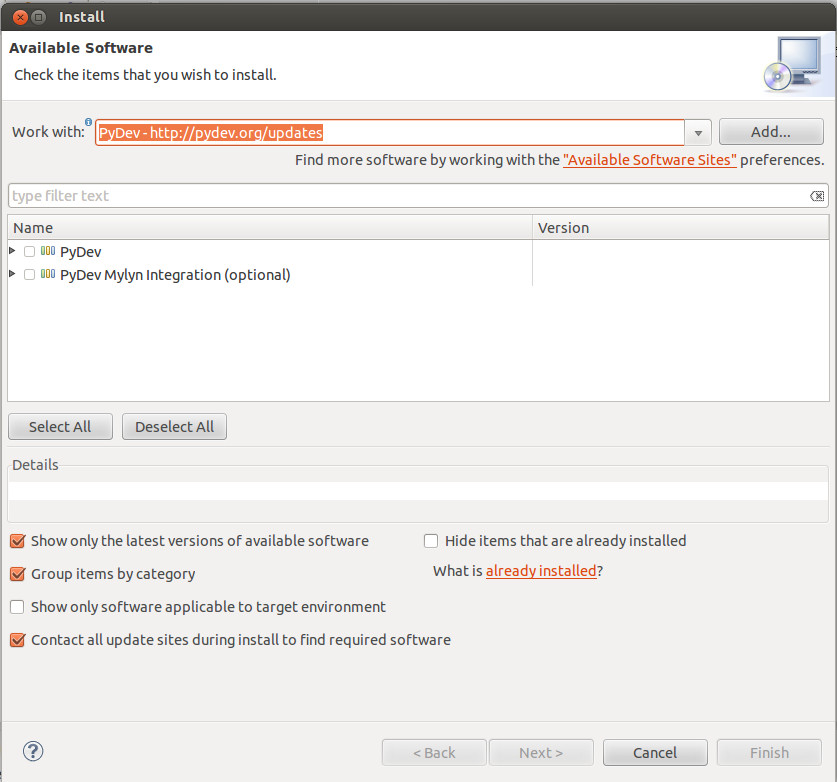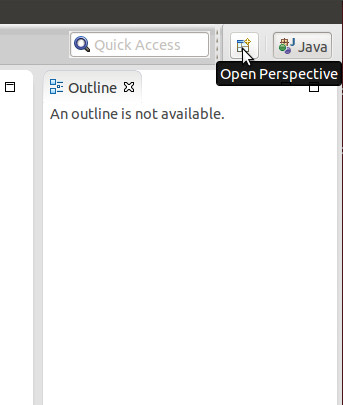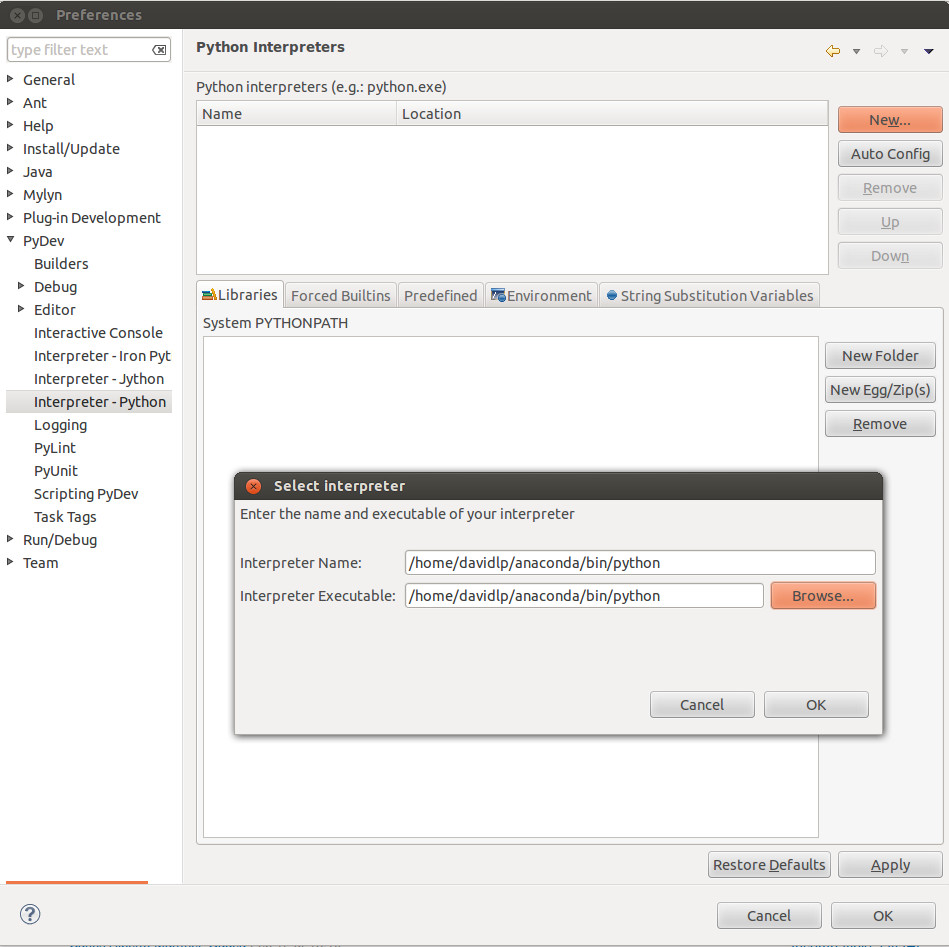Installation guide¶
The following step-by-step installation guide explains in more details how you can setup testbeam analysis under Windows, Linux or OS X operating system. A decent PC with at least 8 Gb of RAM is recommended! The Python distribution and editor chosen here are of cause not mandatory, but have been tested to work. Thus this guide is useful especially for Python beginners.
Installing Miniconda Python¶
Miniconda Python is a Python distribution providing a simple to use package manager to install lots of Python packages for data analysis, plotting and I/O. These packages are heavily used in testbeam analysis. Download and install Miniconda by following this link: Continuum Miniconda. Choose the 64-bit version of Python 2.7.x or Python 3.6.x.
Note
Under Windows Python 2.7 is recommended, since there is no free or easy to install Python 3.6 compiler available.
Installing C++ Compiler¶
Linux: Install gcc via package manager, e.g. on Ubuntu run:
sudo apt-get install build-essential
Windows: Install Microsoft Visual C++ Compiler for Python 2.7.
OS X: Install Xcode from App Store and install Xcode Command Line Tools by running
xcode-select install
Installing Eclipse with PyDev Plugin¶
Eclipse is a state of the art Integrated Development Environment (IDE) for almost every important software programming language (JAVA, C++, Python, Fortran, Ruby, Mathematica). It has a plug in system to extend the development environment. PyDev is the Python IDE plugin for Eclipse. Eclipse needs a Java runtime environmet (JRE) and will not start if this is not installed.
Note
Under Windows it is recommend to use the Eclipse 32-bit version, even on a 64-bit machine. Since Eclipse 64-bit needs JRE 64-bit and Oracle JRE 64-bit does not provide automatic updates. This puts the PC at risk of viruses.
Download the Eclipse from Eclipse Homepage. Eclipse does not need to be installed, the archive has to be extracted to a folder of your choice. Eclipse can be executed by double clicking on the executable.
Eclipse asks for a workspace path where the projects will be located on your harddrive. Standard settings are sufficient.
Close the welcome screen.
Install the PyDev plugin by clicking on Help -> Install New Software . Press add and fill the form (name = PyDev, location = http://pydev.org/updates):

Select PyDev and install (accept license agreement and trust the certificate).
Note
Under Linux you need at least Java 7, otherwise PyDev will not show up in Eclipse without any error message. Please install Java 7 and activate it. In Ubuntu activate it with
sudo update-alternatives --config javaAdd PyDev perspective to Eclipse and select it. The button is located in the upper rigth corner:

Goto Window -> Preferences -> PyDev -> Interpreters -> Python Interpreter and press new.

Select the Python executable in
/home/<username>/anaconda/bin/on Linux orc:\Anaconda\` on *Windows* (optionally use the :code:`Anaconda/env/<environment name>/folder if you are using Anaconda environments) and press the OK button. Everything is set up automatically. More details are given here.
Installing Required Python Packages¶
Open a console and type one by one:
conda update conda
conda install --yes numpy cython pytables scipy matplotlib nose numba mock pytest-cov
pip install progressbar-latest pixel_clusterizer pykalman pylandau pytest
On Windows additionally run:
conda install pywin32
Installing testbeam analysis¶
Goto File -> Import -> Git and select Projects from Git
Click clone URI and type the testbeam analysis repository (https://github.com/SiLab-Bonn/testbeam_analysis) If you have a GitHub account you can add the credentials here
Click next, select all branches, click next and specify the directory where testbeam analysis will be cloned to. Wait until the download of the code is finished. testbeam analysis master branch and releases are tested best, but newest features and bugfixes are in the development branch. Generally the development branch is supposed to work without errors and can be used.
Check Check out as project configured using the New Project Wizard
Select PyDev -> PyDevProject
Give the project a name, select the folder where the testbeam analysis was cloned to (e.g.
/home/username/git/testbeam_analysis) and click finishOpen a shell and run the following command from the testbeam analysis folder:
python setup.py develop
This will compile and install testbeam analysis to the environment.
Note
On Windows if the compilation fails use the Visual Studio Command promt to run the setup script. Because distutils sometimes cannot find VS due to multiple/old VS installation. It might also be needed to install and activate the 64-bit compiler.